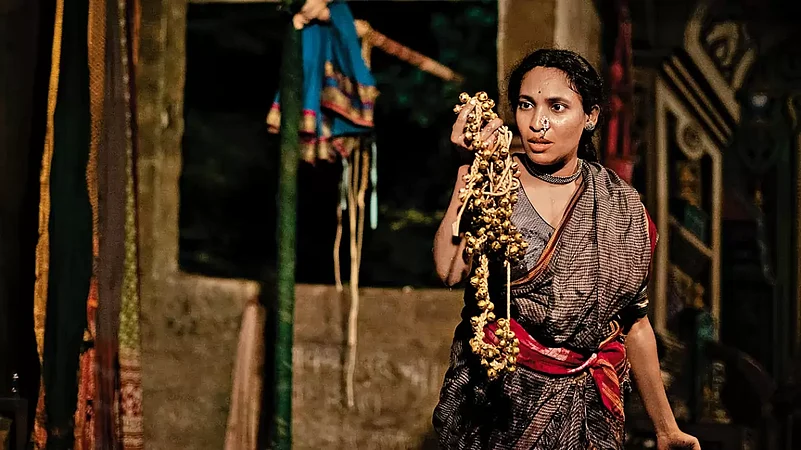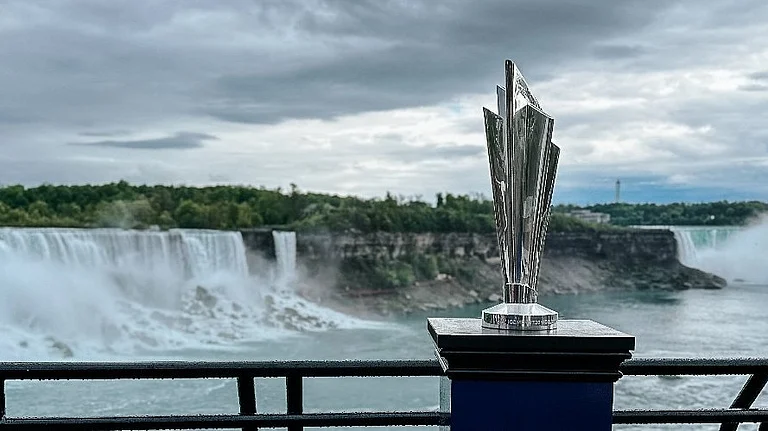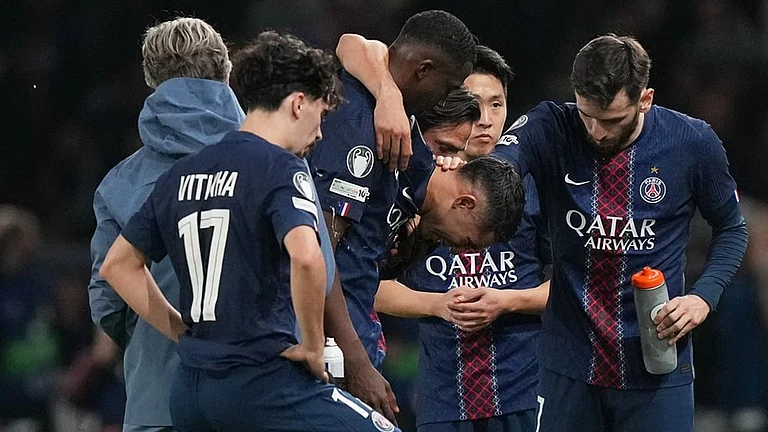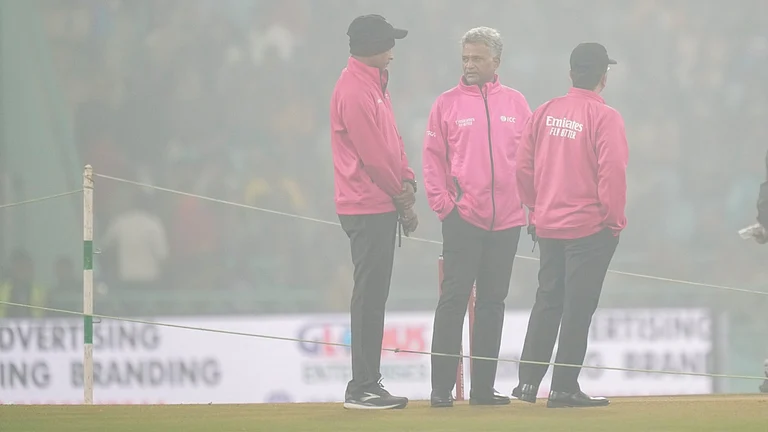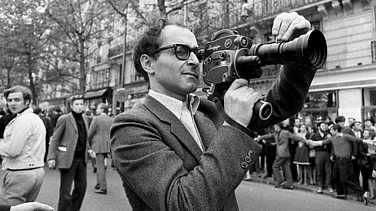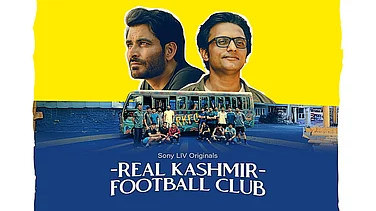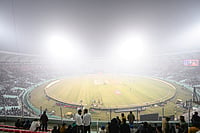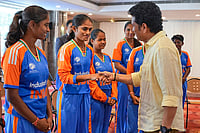
The verse describes a young girl dreaming of becoming a celebrated laavani dancer. Her story unfolds in a room inside ‘The Unnamed Building’ where she plays out her miseries and fantasies aloud in a dream loop, the stagnant straw mat of her dreary present offsetting the kinetic potential of her shiny ghungroos. The audience watches the pathos, entranced. Somewhere else, the tension is broken by an avaricious financial advisor singing an ode to wealth. In another room, a real-life poet recites her fiesty anti-establishment poetry to stir the mood and in yet another, a queer dancer sings softly, seeking their identity.
These are some of the 15 characters that make up the world of Money Opera, the 3-hour-long magnum opus created by theatre and performance artist Amitesh Grover. Written by Sarah Mariam, the site-specific live installation commissioned by the Serendipity Arts Festival premiered in Goa last December and brings together these diverse characters—“misfits” as Grover calls them—to deliver a critique of money and capitalist society through a stubbornly South Asian lens.
Grover, who has been practicing experimental theatre and performance art for the last 15 years, feels that the complex and layered juxtaposition of several medieval and feudal contexts, stratifications and worlds that make up Indian and South Asian society “mix very unpredictably and uniquely with modern technocratic and capitalist developments.” But the discourse on money and capitalist society is usually from within a western paradigm and fails to accurately represent the Indian experience or how it determines kinship patterns, family structures and gender norms.
Enter Money Opera: a multi-star cast ensemble show with a bit of everything: acting, singing, dancing, sculpture, set design, poetry, protest, commentary, critique and generous doses of postmodernist abstraction in what Grover calls an “immersive theatrical experience”.
Everything, everywhere, all at once
Money Opera works like a live installation glued together in a dreamlike continuum of happening and becoming. The rooms become sites for the multiple stories that play out simultaneously in a carefully choreographed dance, each episode varying in length. The lack of a linear storyline can sometimes be disorienting but Grover insists it was the only way to do it. “The run time of each of the stories, if laid out linearly, is nearly 30 hours,” Grover says, adding that he had initially planned for it to be a 48-hour-long non-stop performance. But due to logistical impossibility, the artist compressed it down to just over three hours.
The concert unfolds through the narratives of 15 characters—some fictional, some real—that perform different segments with money as the underlying factor. But other human emotions like guilt, hate, greed, loneliness, conceit and despair bring the individual storylines to life. Some of the stories are profound. Like the tale of real-life oceanographer Vishnupad Barve tells the world about the discovery of a new marine species that has learned to survive in a dystopian poisonous ecosystem. In another, a stage prompter who, from behind the wings, has assisted onstage actors dressed as gods laments how the gods have been rendered mute, a take on the communal climate of today’s politics.
Grover’s personal favourite is a fable about a child ‘goddess’ who could fill up a lake with silver coins every time she cried. First, she was venerated and worshipped but eventually, she was tortured to cry more—and make more money—by her own kin and followers. Themes of greed, guilt, anger, love, and compassion colour individual stories. But there is also the broader commentary on money and capitalism in postmodern South Asia.
Populating the abandonned
The characters of Money Opera are relatable yet not driven by conventional ‘conflict-resolution’ narratives. Some of the stories just happen, much like the entire opera, that just happens, in an abandoned building in an abandoned society. Like the fictional story of the building’s owner who inherited it from his father, along with his memories and fortunes, both good and bad.
The site is an important part of Grover’s vision. “Money and property are wedded to one another—we can’t seem to think of family without thinking of property or wealth without land. So it was very important to me that Money Opera takes place in an abandoned space, not in a proscenium theatre,” explains Grover. He chooses an ‘unnamed’ abandoned building precisely for what it represents—abandonment. He asks, “Abandoned buildings have their own history and future. And what is the future of an abandoned building?” Bleak, much like the future of our society which Grover claims has been similarly abandoned, be it by politicians, leaders, the gilded one percent of the world and so on. The Unnamed Building, then, becomes a post-modernist metaphor for the dark times that we live in.
Site-specific theatre may be a novelty in India but this is not the first time such a technique has been used for storytelling. Known as the ‘promenade style’ of theatre, this particular format, unlike proscenium or intimate theatre, allows audiences to move around from scene to scene, observing and even interacting with the scenes and characters. One of the more popular instances of such a show is Sleep No More, a New York City production of an immersive work of theatre created by Punchdrunk and is a dark interpretation of Shakespeare’s Macbeth. The show has won several accolades for its ‘unique theatre experience’.
Too many rooms, too little space?
The novelty of Money Opera, however, also becomes its undoing in places. Grover’s urge to put every feeling into actual words and the literal visualisation of emotions and memories, though evocative, sometimes runs the risk of feeling like an overproduced show on Netflix.
The success of immersive theatre lies in creating real space and making audiences fully part of the narratives by being in control of their movement, senses, and time. Money Opera ticks all the right boxes. But the complexities of the storylines sometimes get drowned out by other elements— be it the opulent set design or an acrobatic phantom (played by Akanksha Dev) who wanders in and out of scenes intangentially.
Did he ever worry that it would be too much for the audience to absorb in such a tight time-space continuum? Grover says that his work gives the audience space and choice. To explore and choose how much they want to engage with each topic or story. To what degree they wish to interact with the world that he has created. He also adds that it was never his intention for people to finish watching the show in one go. “I want my audience to keep coming back,” he says. Like picking up from where you left off in a novel.
Nevertheless, Money Opera makes one wonder who the audience of the show really is. Will the people whose stories the show tells ever see it? Would a laavani dancer who performs every evening for money in the sangeet baris of Pune get to watch an actor tell her story at an exclusive (and expensive) venue in Goa? Do art festivals like the one where Grover’s show premiered truly offer democratic and proletarian spaces for all kinds of audiences to come and immerse themselves in art? Perhaps not. But it does give others a peek into the lives of an array of interesting characters that they will most likely never get to meet in real life.
(This appeared in the print edition as "The Dance of MONEY")






